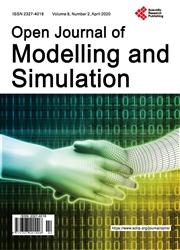使用加速失效时间和广义误差分布的生存时间和纵向CD4细胞计数的贝叶斯联合建模
引用次数: 0
摘要
艾滋病毒/艾滋病患者的生存在很大程度上取决于全面和有针对性的医疗干预措施,如提供抗逆转录病毒疗法和用CD4 T细胞计数监测疾病进展。统计建模方法有助于实现这一目标。本研究旨在开发具有假设广义误差分布(GED)的纵向CD4数据的贝叶斯联合模型,以及两种加速失败时间分布(对数正态和对数逻辑)的HIV/AIDS患者生存时间。数据来自2006年1月至2012年1月期间在Shashemene转诊医院接受抗逆转录病毒治疗随访的患者,以及2008年1月和2015年3月期间在Bale Robe综合医院接受抗转录病毒治疗的患者。贝叶斯联合模型是通过潜在变量和关联参数以及模型参数的指定非信息先验分布来定义的。使用WinBUGS软件中实现的吉布斯采样器算法进行了仿真。对两个不同数据集的分析结果表明,纵向CD4变量的测量误差分布遵循广义误差分布,其尾部比正态分布更粗。与对数正态情况相比,贝叶斯联合GED对数逻辑模型更适合数据集。研究结果表明,随着时间的推移,患者的健康状况可以得到改善。与男性相比,女性患者获得更多的CD4计数。结核病感染会对患者的生存时间产生负面影响。此外,机会性感染数量的增加意味着CD4计数的下降。患者的年龄对疾病标志物有负面影响,而对生存时间没有影响。提高体重可以延长患者的生存时间。具有GED和AFT分布的贝叶斯联合模型被发现在建模纵向和生存过程中是有用的。因此,我们推荐了贝叶斯联合建模下纵向数据测量误差的广义误差分布。进一步的研究可能会研究具有各种类型的共享随机效应和更多预测协变量的模型。本文章由计算机程序翻译,如有差异,请以英文原文为准。
Bayesian Joint Modelling of Survival Time and Longitudinal CD4 Cell Counts Using Accelerated Failure Time and Generalized Error Distributions
Survival of HIV/AIDS patients is crucially dependent on comprehensive and targeted medical interventions such as supply of antiretroviral therapy and monitoring disease progression with CD4 T-cell counts. Statistical modelling approaches are helpful towards this goal. This study aims at developing Bayesian joint models with assumed generalized error distribution (GED) for the longitudinal CD4 data and two accelerated failure time distributions, Lognormal and loglogistic, for the survival time of HIV/AIDS patients. Data are obtained from patients under antiretroviral therapy follow-up at Shashemene referral hospital during January 2006-January 2012 and at Bale Robe general hospital during January 2008-March 2015. The Bayesian joint models are defined through latent variables and association parameters and with specified non-informative prior distributions for the model parameters. Simulations are conducted using Gibbs sampler algorithm implemented in the WinBUGS software. The results of the analyses of the two different data sets show that distributions of measurement errors of the longitudinal CD4 variable follow the generalized error distribution with fatter tails than the normal distribution. The Bayesian joint GED loglogistic models fit better to the data sets compared to the lognormal cases. Findings reveal that patients’ health can be improved over time. Compared to the males, female patients gain more CD4 counts. Survival time of a patient is negatively affected by TB infection. Moreover, increase in number of opportunistic infection implies decline of CD4 counts. Patients’ age negatively affects the disease marker with no effects on survival time. Improving weight may improve survival time of patients. Bayesian joint models with GED and AFT distributions are found to be useful in modelling the longitudinal and survival processes. Thus we recommend the generalized error distributions for measurement errors of the longitudinal data under the Bayesian joint modelling. Further studies may investigate the models with various types of shared random effects and more covariates with predictions.
求助全文
通过发布文献求助,成功后即可免费获取论文全文。
去求助

 求助内容:
求助内容: 应助结果提醒方式:
应助结果提醒方式:


